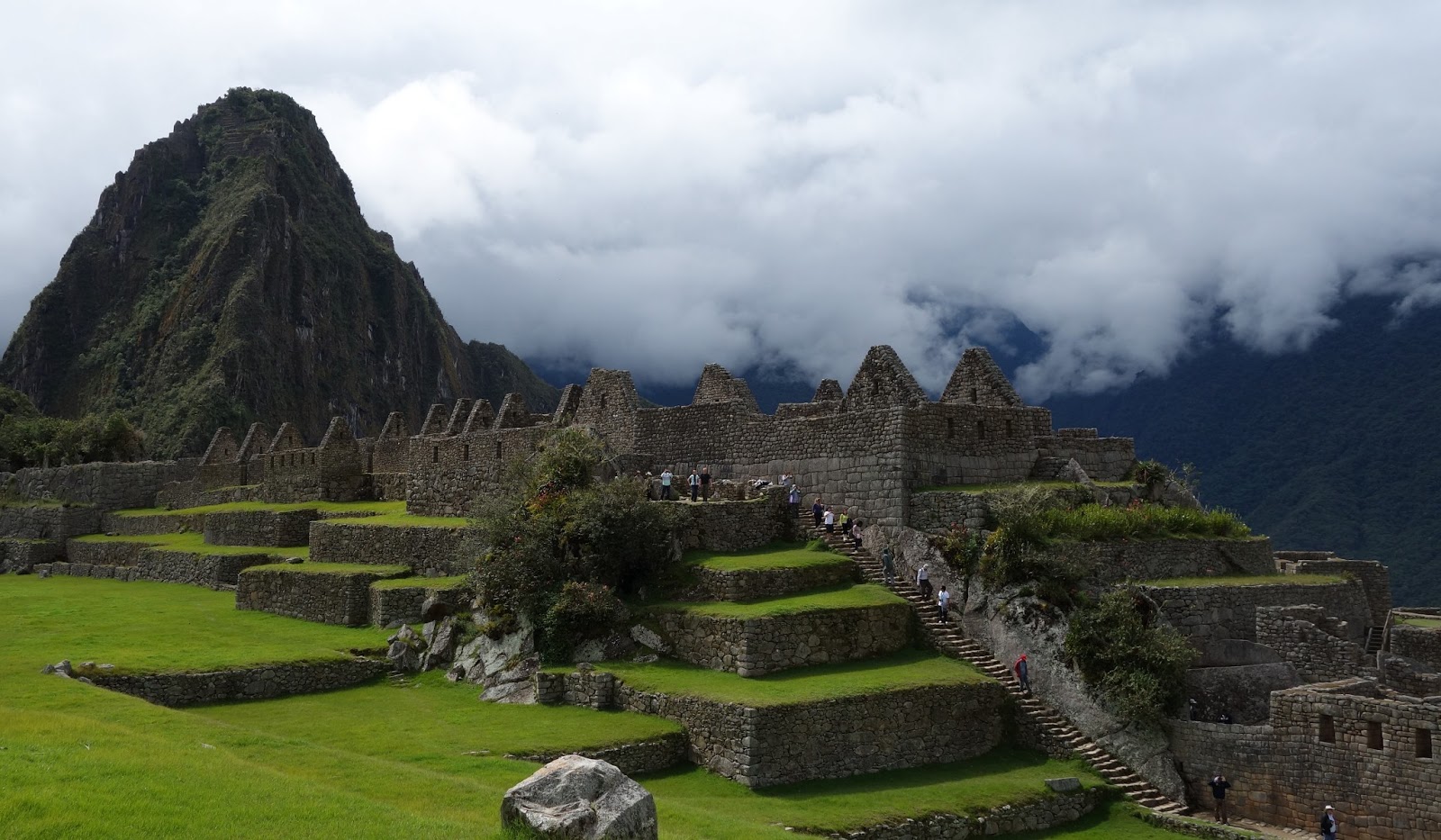The Inca Trail was a sublime combination of nature, history, and mystery. The landscape-cloudscape fusions were beyond words, the hiking unforgettable. I was constantly in awe of the natural beauty, as well as utterly befuddled by how the Incas could have built such impressive structures so high in the Andes.
We did the four-day Inca Trail hike to Machu Picchu, for which the Peruvian government restricts access to only a few hundred hikers a day (we had to get our permits about 6 months in advance). Since our group was out in front, we had almost every path and ancient ruin to ourselves.
Machu Picchu was the final site. It was pretty amazing, though not quite as mystical as the other sites given it was crawling with thousands of tourists. During our time there, we climbed the steep Huayna Picchu that overlooks Machu Picchu; ridiculously, the Incas also felt inclined to build terraces on top of this even higher mountain as well.
The Inca Empire once stretched for 2,500 miles along the spine of the Andes, with a vast network of roads and trails. The Spaniards who first "discovered" them were awed by the roads too, which they recognized were unrivaled by anything in the Old World. Nonetheless, Pizarro and his conquistadors slaughtered thousands of unarmed Incas, taking their leader -- the "Sapa Inca" -- hostage for the greatest ransom in history. Once they had about 5,000 kg of gold and 9,700 kg of silver, they executed him. Most of the intricate gold and silver objects they collected were melted into bars to fund Spain's wars in Europe.
The Spaniards were certainly beyond cruel, but our guide, Marcelino, reminded us that the Incas weren't always perfect souls either. In addition to their diseases, horses, and swords, part of what made it possible for a couple hundred Spaniards to conquer the entire Inca Empire was the fact that it was engaged in a bloody, devastating civil war. By disease or brethren, most of the killing was already done by the time the Europeans arrived.
The brutal histories, however, can never eclipse the raw natural beauty of the Andes and the raw brilliance and manpower that went in to making them habitable.
Bridges, streams, and caves.
Flora
Fauna
Hikers
The Inca Trail guides recommend everyone chew on some coca leaves while hiking to provide energy and help with the altitude, here with some sweet-tasting charcoal from the quinoa plant. Coca leaves contain numerous alkaloids, including trace amounts of cocaine and nicotine. While cocaine can be purified from large amounts of the leaves in complex processes, at least as far as chewing is concerned there is not sufficient cocaine in the leaves to induce the euphoric or psychoactive effects associated with the hard drug.
Nonetheless, the coca leaf is a mild stimulant that suppresses hunger, thirst, pain and fatigue -- making it well-suited to those hiking in the Andes. It also gives your mouth a Novocainesque tingling sensation after chewing it for a while (it has been used as an anesthetic since antiquity). Over 5,000 years of history though, there has been no evidence that coca leaves are addictive.
Finally, as you might guess, coca leaves are used in the production of Coca Cola -- although today the cocaine is removed from the final product. Coca leaves are still a Schedule 1 drug in the US because they contain cocaine.
Nonetheless, the coca leaf is a mild stimulant that suppresses hunger, thirst, pain and fatigue -- making it well-suited to those hiking in the Andes. It also gives your mouth a Novocainesque tingling sensation after chewing it for a while (it has been used as an anesthetic since antiquity). Over 5,000 years of history though, there has been no evidence that coca leaves are addictive.
Finally, as you might guess, coca leaves are used in the production of Coca Cola -- although today the cocaine is removed from the final product. Coca leaves are still a Schedule 1 drug in the US because they contain cocaine.
Beers at the second summit.
Camping in the clouds.
Our awesome guide, Marcelino.
All species can appreciate a good view.
Dave and I woke up at 3am and were first in line to enter Machu Picchu's grounds. We all but sprinted to be the first ones at the Sun Gate. We had it all to ourselves for about 20 minutes before the next hikers arrived; unfortunately, the Sun Gate was temporarily ironically named.
Machu Picchu
On Huayna Picchu... never underestimate the crab-walk.








































Salkantay trek is the alternative to the Inca Trail to Machu Picchu was recently named among the 25 best Treks in the World, by National Geographic Adventure Travel Magazine.
ReplyDelete